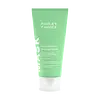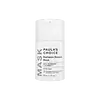What's inside
What's inside
 Key Ingredients
Key Ingredients

 Benefits
Benefits

 Concerns
Concerns

 Ingredients Side-by-side
Ingredients Side-by-side

Water
Skin ConditioningButylene Glycol
HumectantDimethicone
EmollientHydroxyethyl Acrylate/Sodium Acryloyldimethyl Taurate Copolymer
Emulsion StabilisingChondrus Crispus Extract
Skin ConditioningRubus Chamaemorus Fruit Extract
AntioxidantGanoderma Lucidum Extract
Skin ProtectingGlycerin
HumectantButyrospermum Parkii Butter
Skin ConditioningHydrogenated Lecithin
EmulsifyingPentapeptide-59
Skin ConditioningGinkgo Biloba Leaf Extract
Skin ConditioningTerminalia Chebula Fruit Extract
Skin ConditioningCassia Angustifolia Seed Polysaccharide
Skin ConditioningVaccinium Vitis-Idaea Fruit Extract
AntioxidantSambucus Nigra Fruit Extract
AstringentSchisandra Chinensis Fruit Extract
Skin ConditioningRhodiola Rosea Root Extract
EmollientGlycyrrhiza Glabra Root Extract
BleachingLinum Usitatissimum Seed Oil
PerfumingPelvetia Canaliculata Extract
Skin ProtectingAgastache Mexicana Flower/Leaf/Stem Extract
Skin ConditioningBetula Alba Juice
AstringentEchium Plantagineum Seed Oil
Skin ConditioningXanthan Gum
EmulsifyingSynthetic Fluorphlogopite
Myristamidopropyl Pg-Dimonium Chloride Phosphate
Skin ConditioningLauroyl Lysine
Skin ConditioningPropanediol
SolventPhenoxyethanol
PreservativeEthylhexylglycerin
Skin ConditioningPotassium Sorbate
PreservativeWater, Butylene Glycol, Dimethicone, Hydroxyethyl Acrylate/Sodium Acryloyldimethyl Taurate Copolymer, Chondrus Crispus Extract, Rubus Chamaemorus Fruit Extract, Ganoderma Lucidum Extract, Glycerin, Butyrospermum Parkii Butter, Hydrogenated Lecithin, Pentapeptide-59, Ginkgo Biloba Leaf Extract, Terminalia Chebula Fruit Extract, Cassia Angustifolia Seed Polysaccharide, Vaccinium Vitis-Idaea Fruit Extract, Sambucus Nigra Fruit Extract, Schisandra Chinensis Fruit Extract, Rhodiola Rosea Root Extract, Glycyrrhiza Glabra Root Extract, Linum Usitatissimum Seed Oil, Pelvetia Canaliculata Extract, Agastache Mexicana Flower/Leaf/Stem Extract, Betula Alba Juice, Echium Plantagineum Seed Oil, Xanthan Gum, Synthetic Fluorphlogopite, Myristamidopropyl Pg-Dimonium Chloride Phosphate, Lauroyl Lysine, Propanediol, Phenoxyethanol, Ethylhexylglycerin, Potassium Sorbate
Water
Skin ConditioningButylene Glycol
HumectantGlycerin
HumectantDimethicone
EmollientNiacinamide
SmoothingOlea Europaea Fruit Oil
MaskingHydroxyethyl Acrylate/Sodium Acryloyldimethyl Taurate Copolymer
Emulsion StabilisingCarrageenan
Arbutin
AntioxidantMagnesium Ascorbyl Phosphate
AntioxidantSodium Hyaluronate Crosspolymer
HumectantArctostaphylos Uva Ursi Leaf Extract
Skin ConditioningAllantoin
Skin ConditioningIsohexadecane
EmollientEchium Plantagineum Seed Oil
Skin ConditioningSalix Alba Bark Extract
AstringentHydrogenated Lecithin
EmulsifyingPolysorbate 60
EmulsifyingCitric Acid
BufferingXanthan Gum
EmulsifyingHydrogenated Phosphatidylcholine
EmulsifyingPhenoxyethanol
PreservativePotassium Sorbate
PreservativeSodium Benzoate
MaskingWater, Butylene Glycol, Glycerin, Dimethicone, Niacinamide, Olea Europaea Fruit Oil, Hydroxyethyl Acrylate/Sodium Acryloyldimethyl Taurate Copolymer, Carrageenan, Arbutin, Magnesium Ascorbyl Phosphate, Sodium Hyaluronate Crosspolymer, Arctostaphylos Uva Ursi Leaf Extract, Allantoin, Isohexadecane, Echium Plantagineum Seed Oil, Salix Alba Bark Extract, Hydrogenated Lecithin, Polysorbate 60, Citric Acid, Xanthan Gum, Hydrogenated Phosphatidylcholine, Phenoxyethanol, Potassium Sorbate, Sodium Benzoate
Alternatives
Ingredients Explained
These ingredients are found in both products.
Ingredients higher up in an ingredient list are typically present in a larger amount.
Butylene Glycol (or BG) is used within cosmetic products for a few different reasons:
Overall, Butylene Glycol is a safe and well-rounded ingredient that works well with other ingredients.
Though this ingredient works well with most skin types, some people with sensitive skin may experience a reaction such as allergic rashes, closed comedones, or itchiness.
Learn more about Butylene GlycolDimethicone is a type of synthetic silicone created from natural materials such as quartz.
What it does:
Dimethicone comes in different viscosities:
Depending on the viscosity, dimethicone has different properties.
Ingredients lists don't always show which type is used, so we recommend reaching out to the brand if you have questions about the viscosity.
This ingredient is unlikely to cause irritation because it does not get absorbed into skin. However, people with silicone allergies should be careful about using this ingredient.
Note: Dimethicone may contribute to pilling. This is because it is not oil or water soluble, so pilling may occur when layered with products. When mixed with heavy oils in a formula, the outcome is also quite greasy.
Learn more about DimethiconeEchium Plantagineum Seed Oil is an oil and isn't fungal acne safe.
Glycerin is already naturally found in your skin. It helps moisturize and protect your skin.
A study from 2016 found glycerin to be more effective as a humectant than AHAs and hyaluronic acid.
As a humectant, it helps the skin stay hydrated by pulling moisture to your skin. The low molecular weight of glycerin allows it to pull moisture into the deeper layers of your skin.
Hydrated skin improves your skin barrier; Your skin barrier helps protect against irritants and bacteria.
Glycerin has also been found to have antimicrobial and antiviral properties. Due to these properties, glycerin is often used in wound and burn treatments.
In cosmetics, glycerin is usually derived from plants such as soybean or palm. However, it can also be sourced from animals, such as tallow or animal fat.
This ingredient is organic, colorless, odorless, and non-toxic.
Glycerin is the name for this ingredient in American English. British English uses Glycerol/Glycerine.
Learn more about GlycerinHydrogenated Lecithin is created from the hydrogenation of lecithin (a group of phospholipids). Hydrogenation is a chemical reaction between hydrogen and another element.
This ingredient is an emollient and emulsifier. As an emollient, it helps soften skin by trapping moisture within. As an emulsifier, it prevents oil and water ingredients from separating.
This is a synthetic polymer. It helps improve the texture of products by adding thickness and gel-like feel.
It is also an emulsifer, meaning it prevents ingredients such as oil and water from separating. It also helps evenly disperse other ingredients.
Phenoxyethanol is a preservative that has germicide, antimicrobial, and aromatic properties. Studies show that phenoxyethanol can prevent microbial growth. By itself, it has a scent that is similar to that of a rose.
It's often used in formulations along with Caprylyl Glycol to preserve the shelf life of products.
Potassium Sorbate is a preservative used to prevent yeast and mold in products. It is commonly found in both cosmetic and food products.
This ingredient comes from potassium salt derived from sorbic acid. Sorbic acid is a natural antibiotic and effective against fungus.
Both potassium sorbate and sorbic acid can be found in baked goods, cheeses, dried meats, dried fruit, ice cream, pickles, wine, yogurt, and more.
You'll often find this ingredient used with other preservatives.
Learn more about Potassium SorbateWater. It's the most common cosmetic ingredient of all. You'll usually see it at the top of ingredient lists, meaning that it makes up the largest part of the product.
So why is it so popular? Water most often acts as a solvent - this means that it helps dissolve other ingredients into the formulation.
You'll also recognize water as that liquid we all need to stay alive. If you see this, drink a glass of water. Stay hydrated!
Learn more about WaterXanthan gum is used as a stabilizer and thickener within cosmetic products. It helps give products a sticky, thick feeling - preventing them from being too runny.
On the technical side of things, xanthan gum is a polysaccharide - a combination consisting of multiple sugar molecules bonded together.
Xanthan gum is a pretty common and great ingredient. It is a natural, non-toxic, non-irritating ingredient that is also commonly used in food products.
Learn more about Xanthan Gum